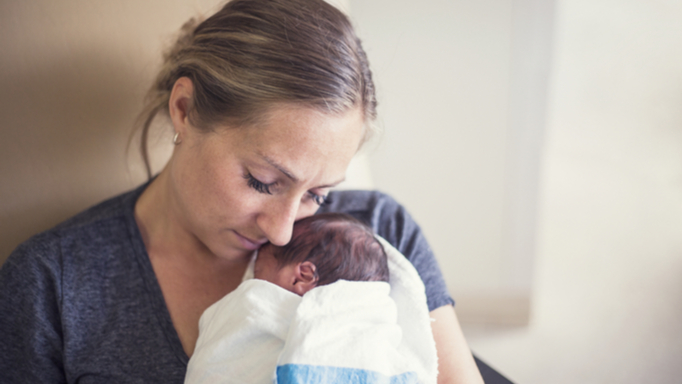The Biden Administration unveiled its “American-Families Plan” on Wednesday, and among the $1.8 trillion worth of proposals is a plan to “[c]reate a national comprehensive paid family and medical leave program,” which would “provide workers up to $4,000 a month” to “take time to bond with a new child, care for a seriously ill loved one, deal with a loved one’s military deployment, find safety from sexual assault, stalking, or domestic violence, heal from their own serious illness, or take time to deal with the death of a loved one.”
This plan will almost certainly appeal to Biden’s base: 8 in 10 Democrats favor a federal paid leave program. But conservatives would be wise to pay attention to this issue too, as six in 10 Republicans and seven in 10 independents also support paid leave.
Despite widespread support for a federal paid leave program in theory, in practice the momentum for such a program falters when we start talking about how to pay for it. The American-Families Plan doesn’t specify how its paid leave benefits would be funded, but presumably any Democratic legislation would follow the typical model of increasing payroll taxes on workers.
If that is, indeed, the Biden Administration’s plan, it’s a shame. Study after study of payroll-tax funded paid leave programs in States and foreign countries show that such programs on balance take money away from the poorest families, making life harder for them and not easier—the opposite of the programs’ intended effect. This phenomenon occurs because low-income workers are, for a variety of factors, substantially less likely to actually collect benefits from a government-run paid leave program than middle- and upper-income workers.
For example, one study of California’s paid leave program concluded that “[a]lthough a large majority of the California workforce is eligible for [paid leave], only a quarter of new mothers use the benefit,” and “[t]he median [leave] taker makes about $10,000 more per year than the median of working California women.” Another found that “fewer than 4 percent of claimants had incomes in the lowest [income] bracket,” whereas “more than 20 percent of claimants had incomes in the highest bracket.”
And a survey of employed women in San Francisco found that, while 79 percent of new moms with household incomes above $97,000 received paid leave benefits from the government, only 36 percent of moms with household incomes under $32,000 received such support.
This perverse outcome is consistent with the international experience with government-run paid leave programs, which scholars have found constitute a “pure leisure transfer to middle and upper income families . . . at the expense of some of the least well off in society.” One study of the UK’s paid leave policy, for example, found that, while 68 percent of high-income mothers take more than 26 weeks of parental leave, only 31 percent of low-income mothers do.
The authors concluded that “[t]his compounds the financial bias in current arrangements that favour higher income families,” and “[t]his also means that parents who have worked and paid taxes throughout their lives do not receive government support.”
Democrats would be wise to use this moment to collaborate with Republicans on alternative ways to fund paid leave. During the last four years, Republicans have created policies that would provide flexible, budget-neutral options for American workers to finance paid leave without requiring additional taxes.
Because these policies avoid a regressive payroll tax hike, they’re—counter-intuitively—actually more progressive than the Democratic proposals.

